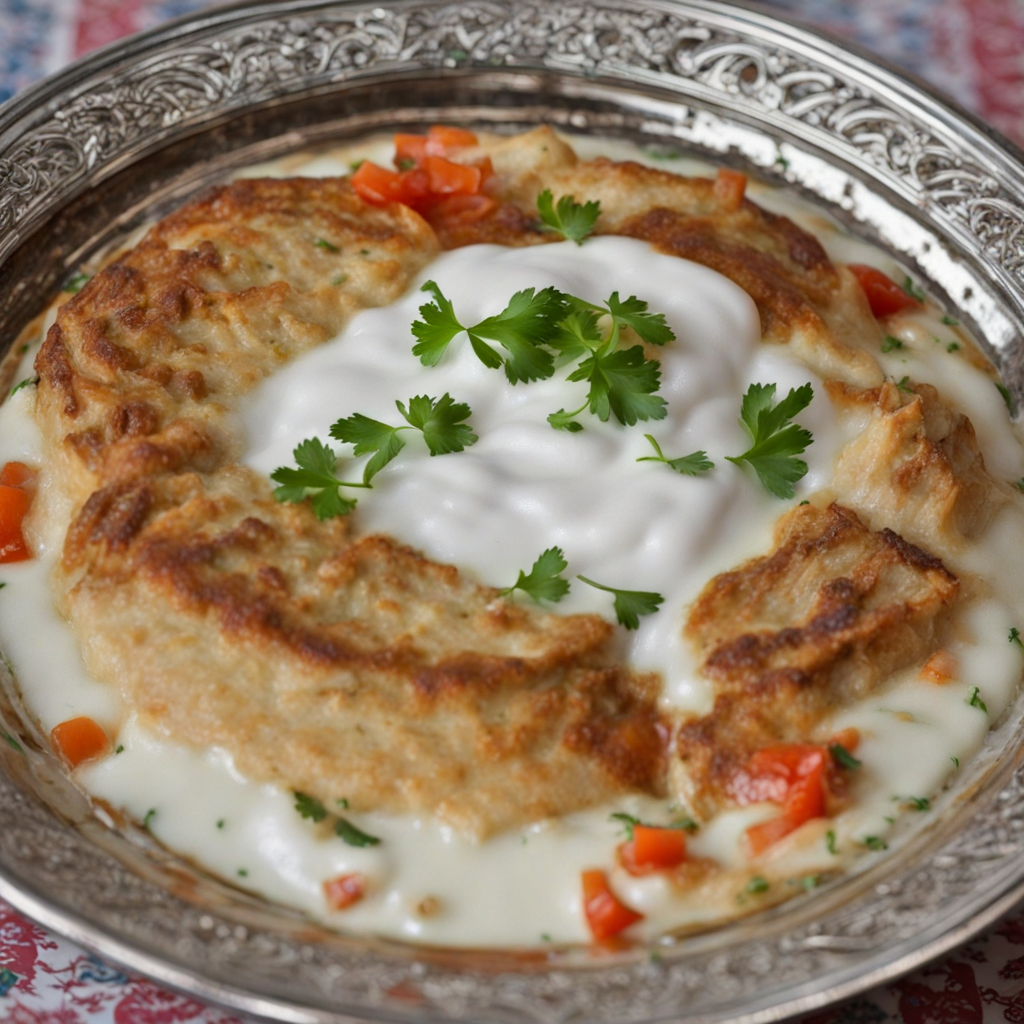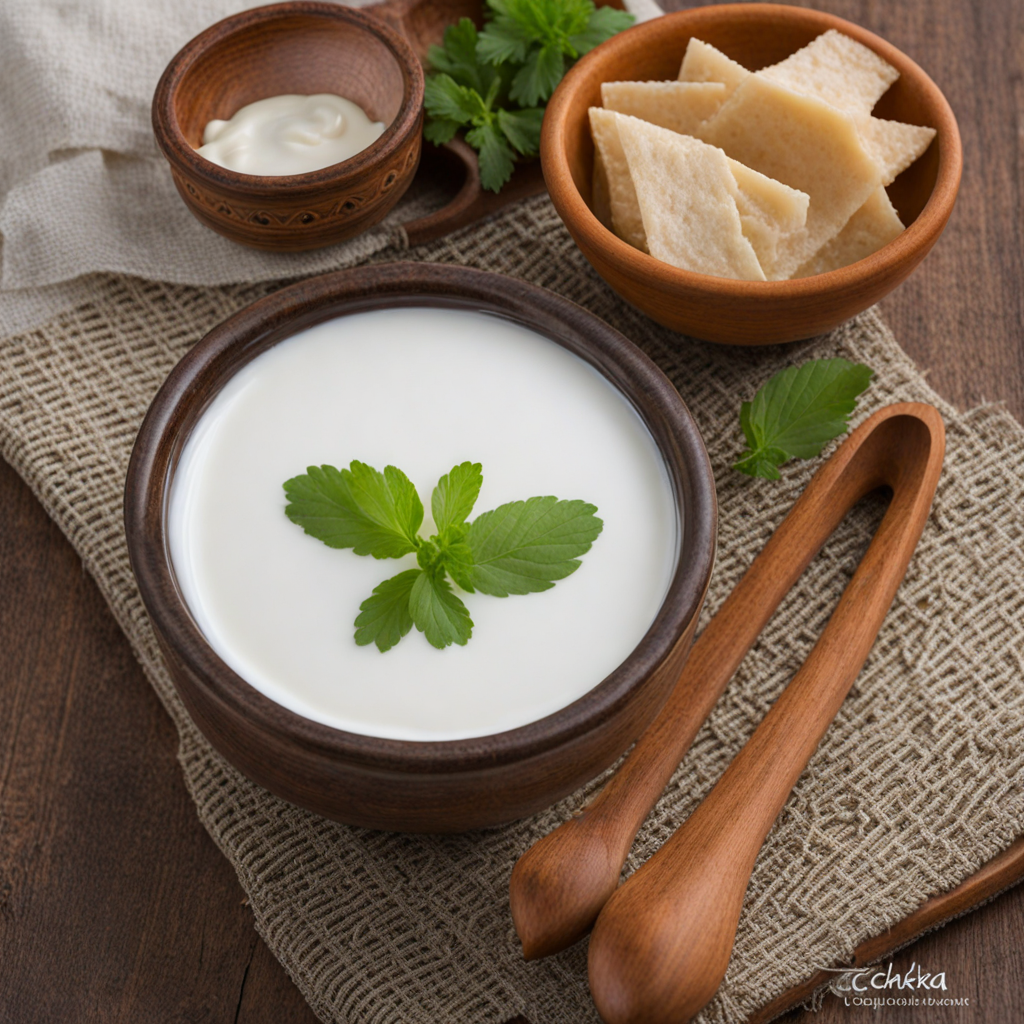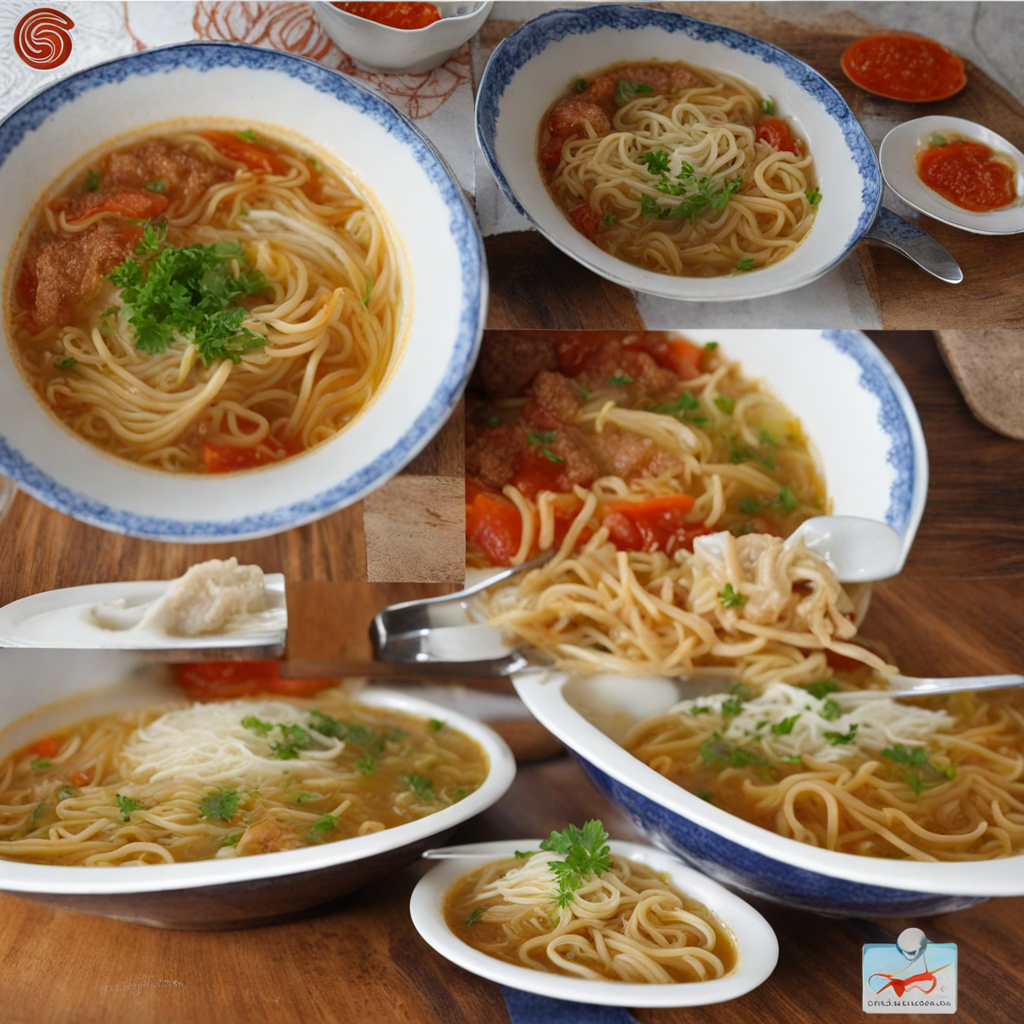Qurutob
Qurutob is a traditional Tajik dish that offers a unique and hearty dining experience, showcasing the rich culinary heritage of the region. At its core, qurutob is made with layers of crispy flatbread, known as "tandir non," which is broken into pieces and soaked in a savory, tangy sauce made from qurut—a fermented dairy product resembling yogurt or cheese. This sauce is often enhanced with various spices, herbs, and sometimes even a splash of vinegar, creating a delightful balance of flavors. The dish is typically topped with an array of fresh vegetables, such as tomatoes, cucumbers, and onions, making it not only a flavorful option but also a colorful one. The preparation of qurutob varies across different households, with each cook adding their personal touch to the dish. Some versions include chunks of meat, while others may incorporate legumes or nuts for added texture and protein. A common practice is to add a sprinkle of fresh herbs like dill or cilantro, which elevates the dish's aromatic qualities and complements the tanginess of the qurut. The combination of the soft, soaked bread and the refreshing crunch of the vegetables creates a satisfying contrast that leaves a lasting impression on the palate. Qurutob is often enjoyed as a communal meal, bringing friends and family together to share in the experience of breaking bread and savoring each bite. It embodies the warmth and hospitality of Tajik culture, inviting diners to explore the robust flavors that define this beloved dish. Whether served at a festive gathering or a simple family dinner, qurutob represents not just a meal, but a celebration of tradition and togetherness, making it a must-try for anyone looking to discover the culinary wonders of Tajikistan.
How It Became This Dish
The History and Cultural Significance of Қурутоб (Qurutob) in Tajikistan Origins of Qurutob Qurutob is a traditional dish hailing from the mountainous regions of Central Asia, particularly Tajikistan. Its name derives from the Persian word "qurut," which refers to the dried yogurt or cheese that is a key ingredient in the dish. The origins of Qurutob can be traced back centuries, with references to similar yogurt-based dishes appearing in historical texts that detail the diet of early nomadic tribes of the region. Historically, the practice of drying yogurt into qurut was a practical solution to preserve milk in a land where refrigeration was non-existent. As pastoral nomads moved across the harsh terrains of Tajikistan, they developed methods to ensure their food sources were sustainable, and qurut became a staple. This fermented product not only provided essential nutrients but also served as a source of hydration in the arid climate. Cultural Significance Qurutob is more than just a meal; it embodies the essence of Tajik culture, reflecting the values of hospitality, community, and the importance of familial ties. It is often prepared during significant occasions such as weddings, religious festivals, and family gatherings, where its communal aspect is highlighted. Sharing Qurutob among family and friends symbolizes unity and generosity, making it a staple at social gatherings. The preparation of Qurutob also involves a ceremonial aspect. Traditionally, the dish is made with layers of bread (usually flatbread known as "lepyoshka") soaked in a savory yogurt sauce, topped with a variety of ingredients such as onions, tomatoes, and herbs. The layering process signifies the importance of care and attention in nurturing relationships, as each ingredient is thoughtfully chosen to enhance the dish's flavor and nutritional value. Furthermore, Qurutob is often accompanied by traditional Tajik music and dance, making it an integral part of cultural celebrations. The act of preparing and consuming Qurutob is steeped in rituals that connect people with their heritage, reinforcing their identity and the importance of their culinary practices. Development Over Time As Tajikistan has evolved through various historical periods, so too has Qurutob. The dish has adapted to incorporate local ingredients and flavors, reflecting the agricultural practices of the region. In rural areas, Qurutob might feature seasonal vegetables, while urban versions may include more diverse ingredients due to globalization and the introduction of international culinary practices. In the Soviet era, Tajikistan underwent significant agricultural transformations, with collective farms becoming prevalent. This shift impacted traditional food practices, as the availability of certain ingredients fluctuated. During this time, Qurutob remained a beloved dish, but it also began to acquire regional variations. Urban centers saw the emergence of restaurants serving Qurutob alongside other Central Asian cuisines, allowing the dish to reach a broader audience and gain popularity beyond Tajikistan’s borders. After the collapse of the Soviet Union in the early 1990s, Tajikistan experienced a resurgence of interest in traditional foods as a means of reinforcing national identity. Qurutob became a symbol of Tajik resilience and cultural pride, with families reviving traditional recipes and methods of preparation. This renewed interest has helped maintain the dish's popularity among younger generations, who see it not only as a link to their heritage but also as a delicious and nutritious meal. In recent years, the global interest in ethnic and traditional foods has led to Qurutob being featured in international culinary circles. Chefs and food enthusiasts have begun to celebrate this unique dish, showcasing it in food festivals and cultural events. This exposure has contributed to a growing appreciation for Tajik cuisine and the role of Qurutob as a culinary ambassador of Tajik culture. Modern Interpretations Today, Qurutob continues to evolve while maintaining its roots. Modern interpretations of the dish may include innovative twists such as the incorporation of grilled meats, fusion spices, or even vegan adaptations that replace traditional dairy with plant-based alternatives. This flexibility ensures that Qurutob remains relevant in a rapidly changing culinary landscape while still honoring its rich history. Moreover, the rise of social media has enabled home cooks and professional chefs alike to share their Qurutob creations, showcasing the dish’s versatility and inviting others to experience Tajik culture through food. Online platforms have fostered a sense of community among those who share a passion for traditional cooking, allowing for the exchange of recipes, techniques, and personal stories related to Qurutob. Conclusion In summary, Qurutob is more than just a dish; it represents the heart and soul of Tajikistan. With roots in the nomadic traditions of Central Asia, it has developed over centuries, reflecting the agricultural practices, cultural values, and social dynamics of the Tajik people. As it continues to be celebrated in both traditional and modern forms, Qurutob stands as a testament to the resilience of Tajik culture and its ability to adapt and thrive in a changing world. The enduring legacy of Qurutob is a reminder of the importance of food in shaping cultural identity and fostering connections among people. As Tajikistan continues to navigate the complexities of modern life, Qurutob remains a beloved dish that nourishes not only the body but also the spirit, bringing together generations of families and communities in a shared appreciation for their culinary heritage.
You may like
Discover local flavors from Tajikistan







